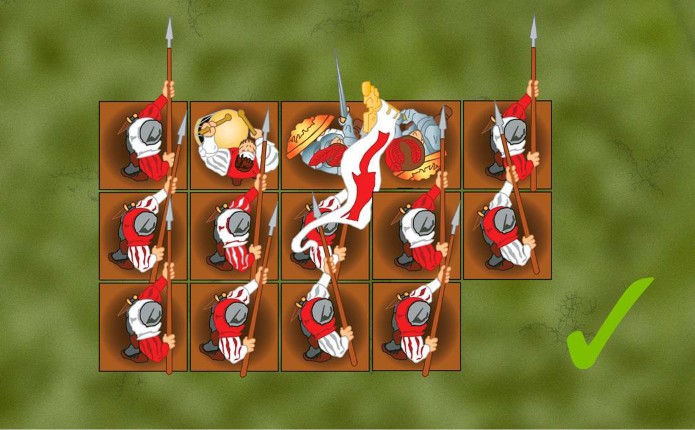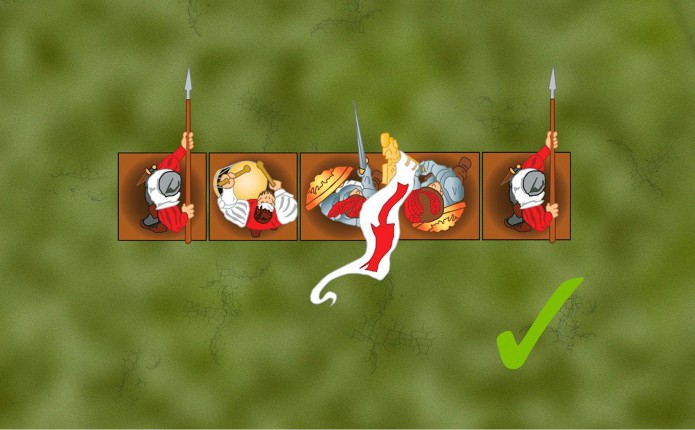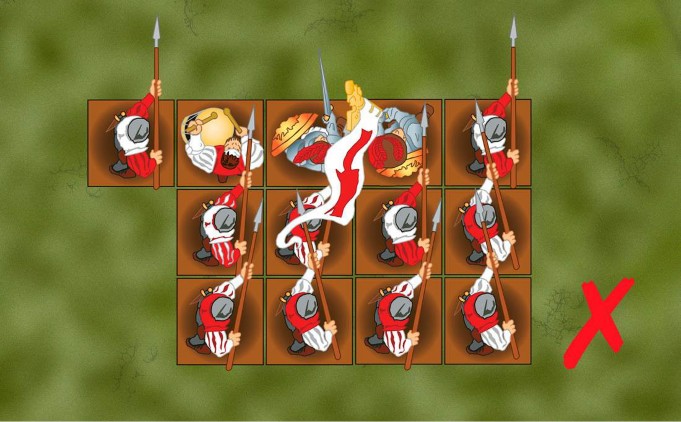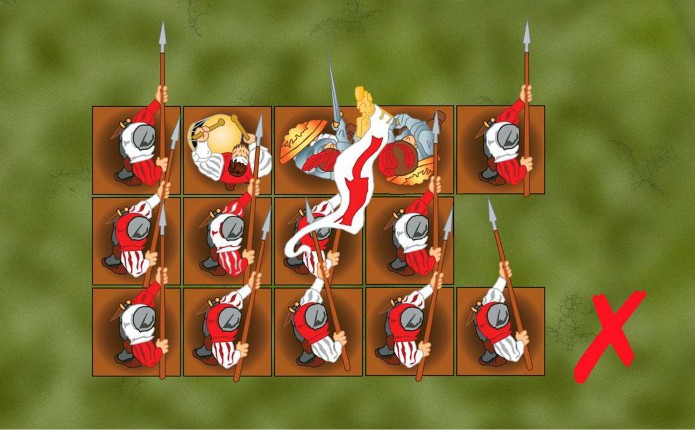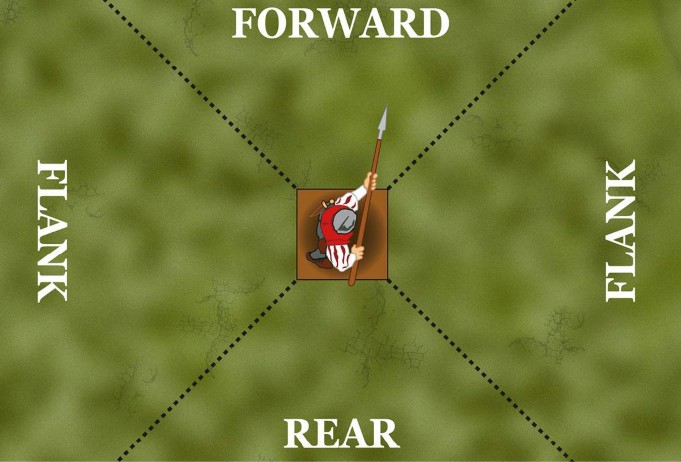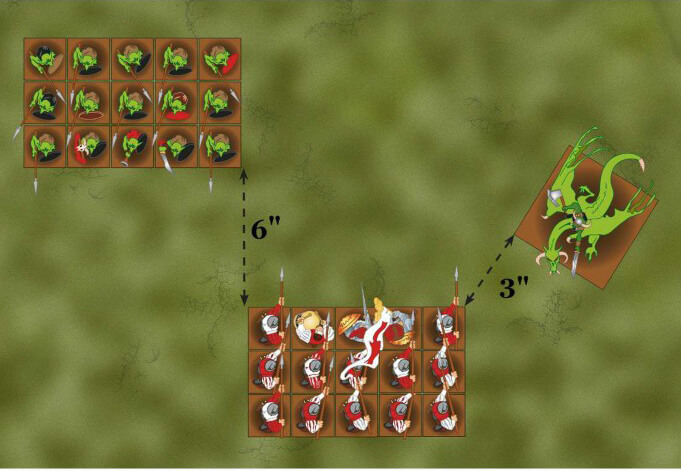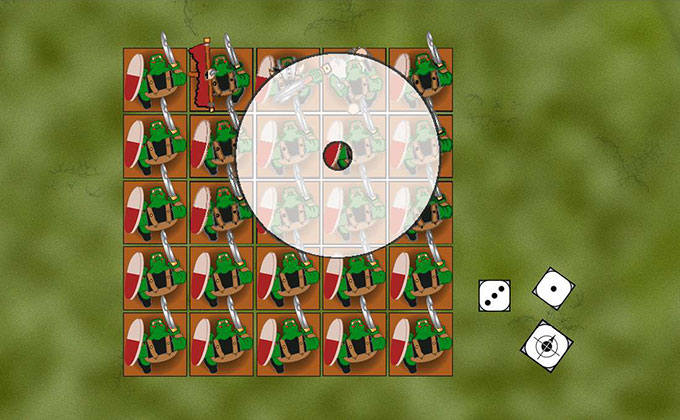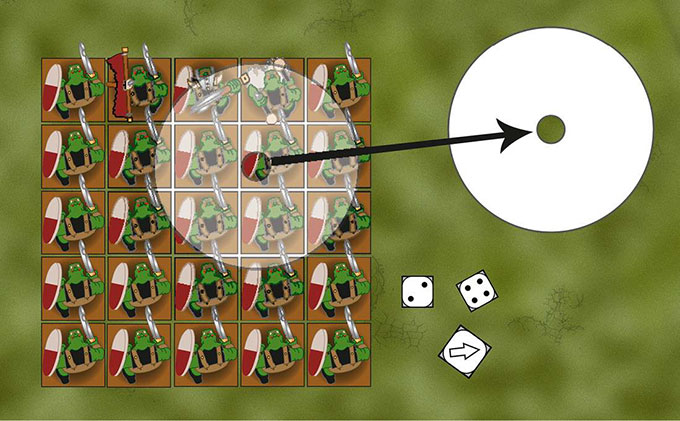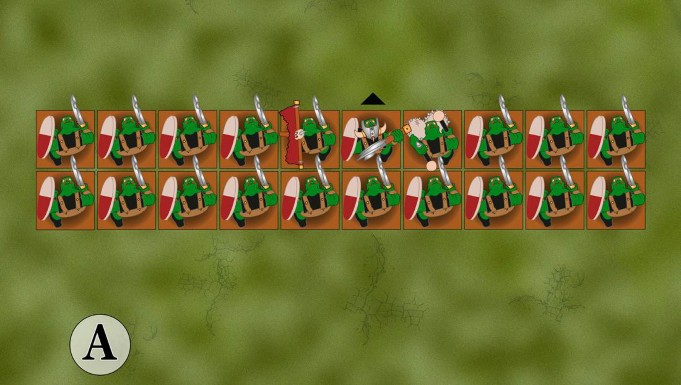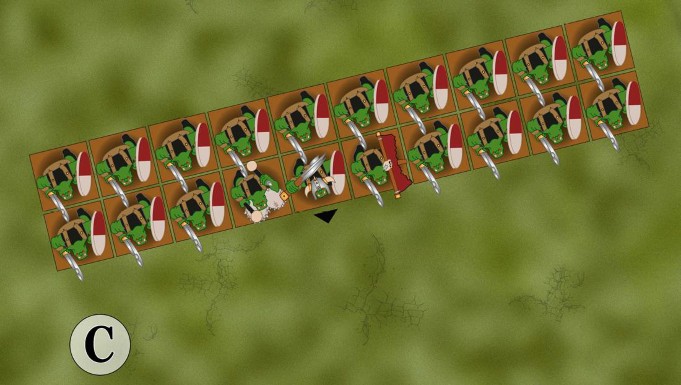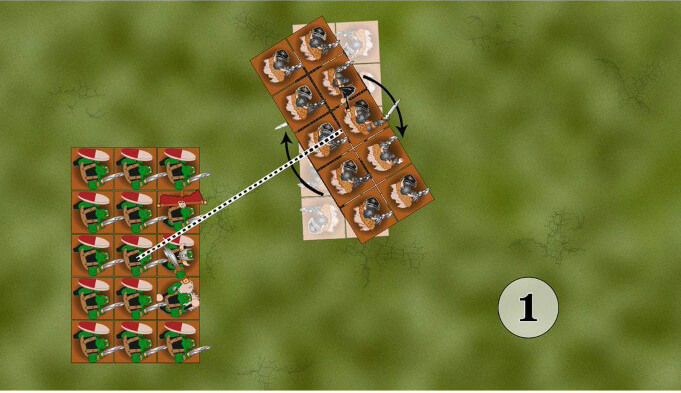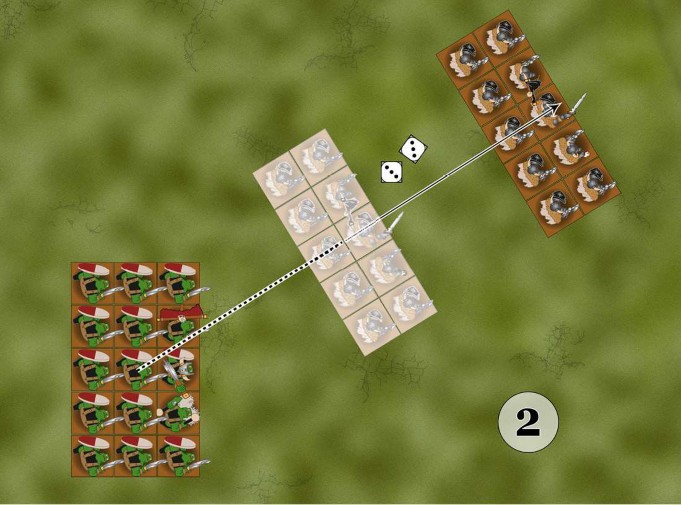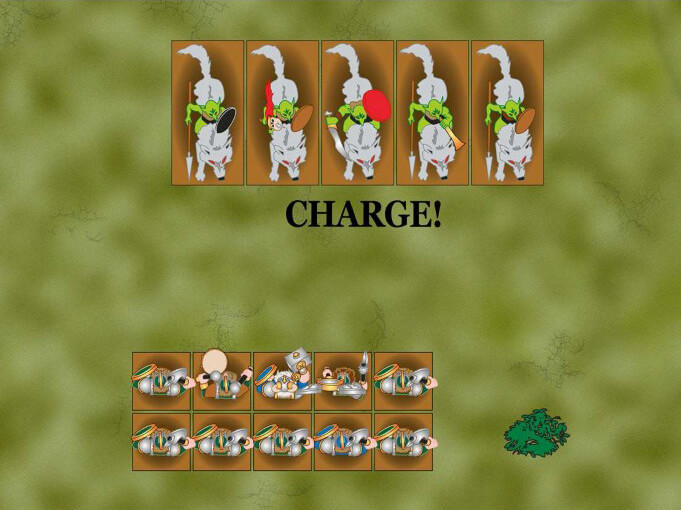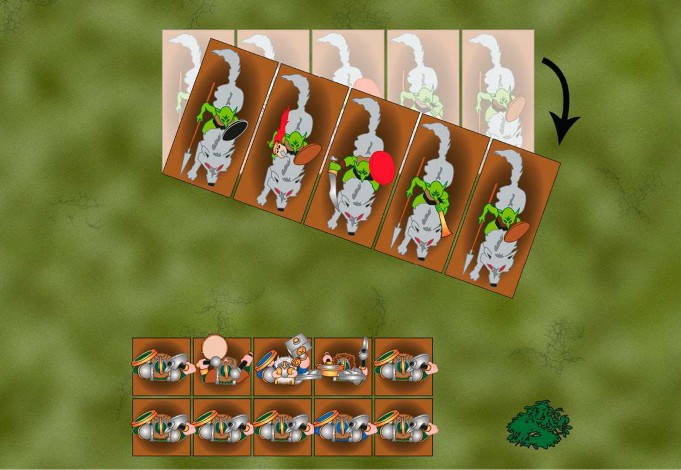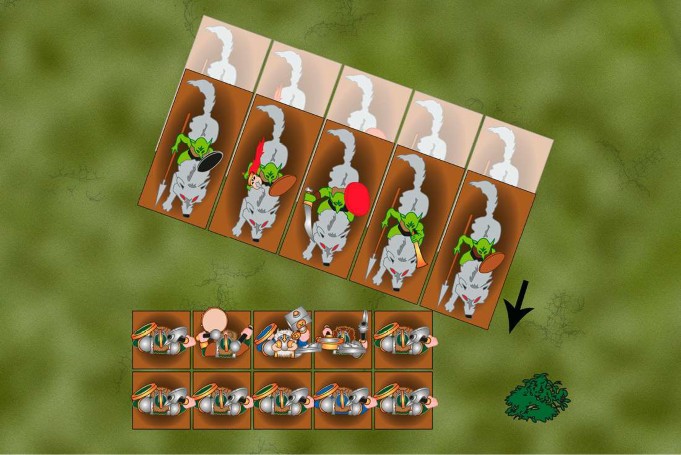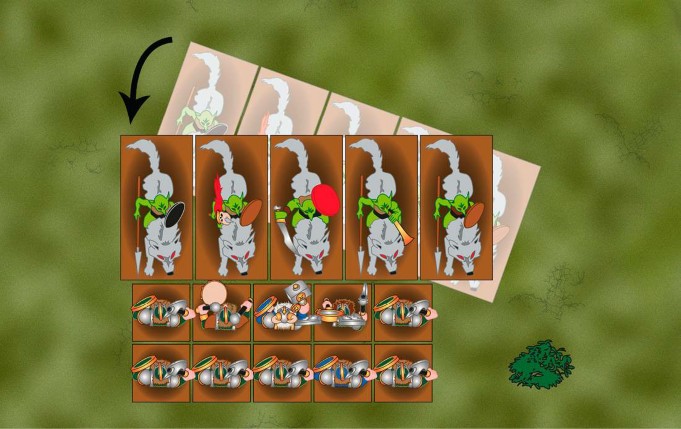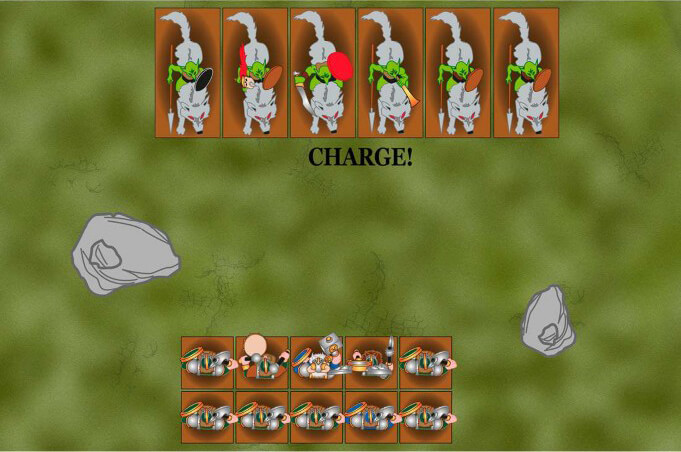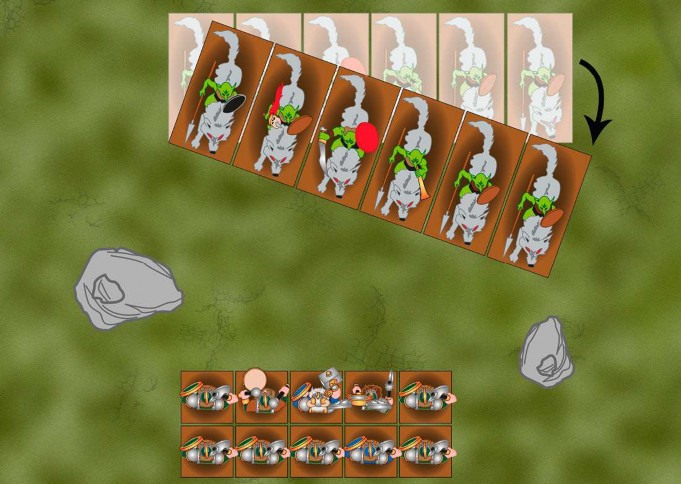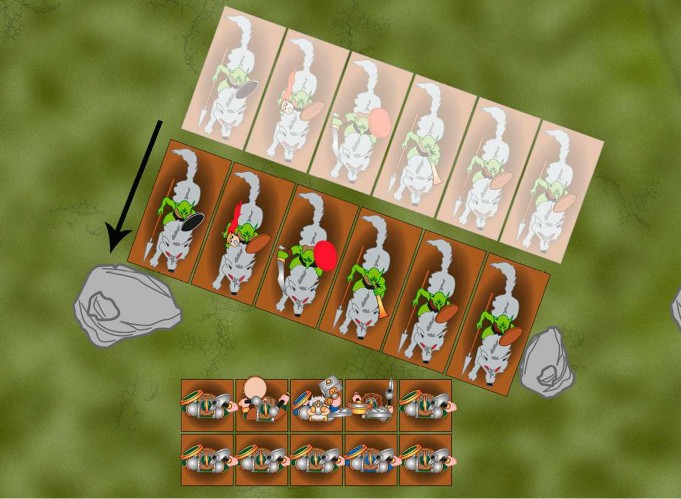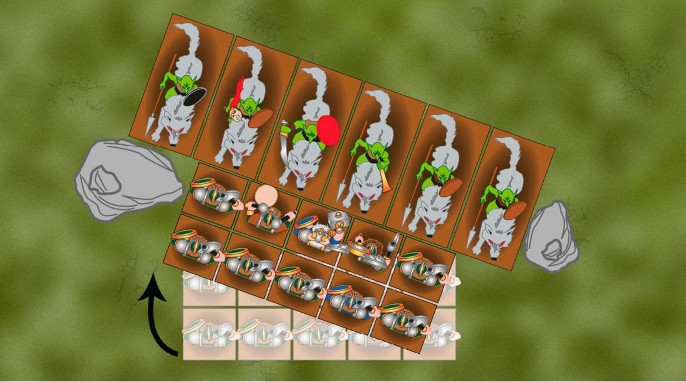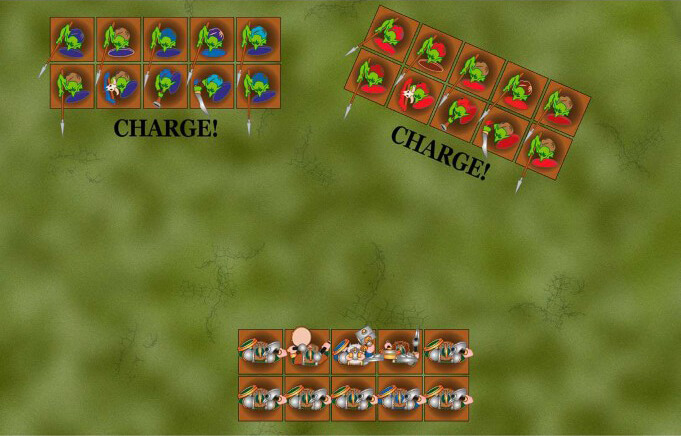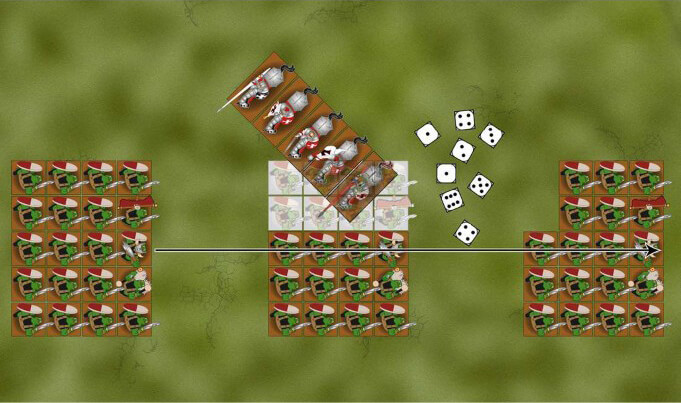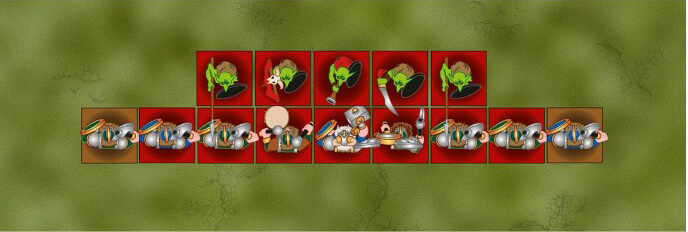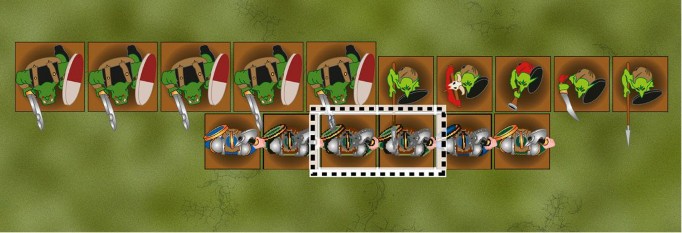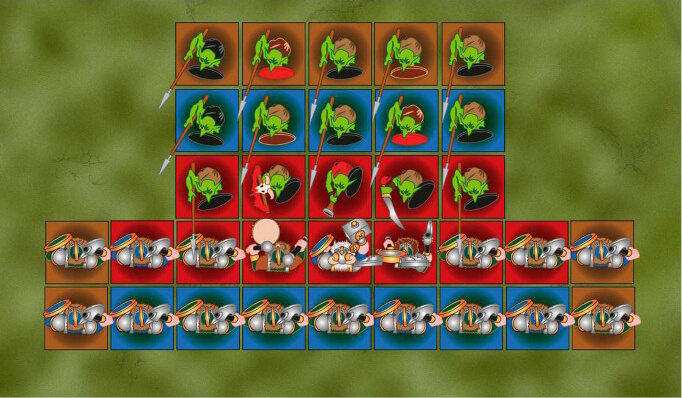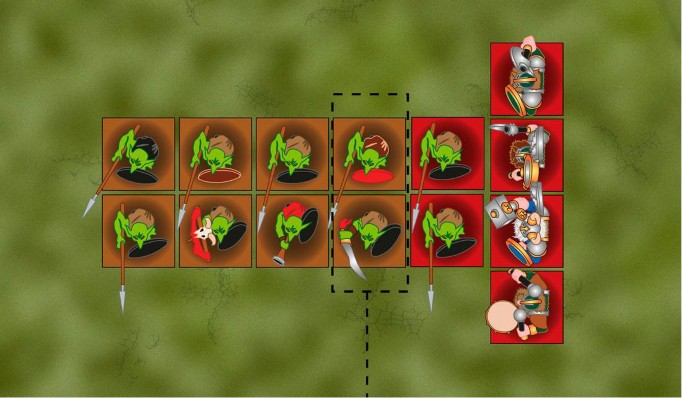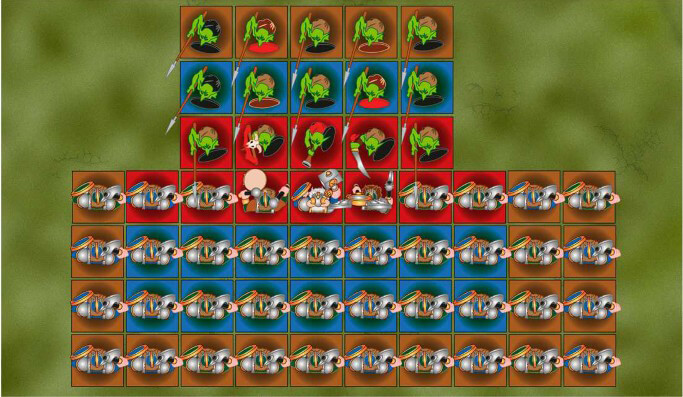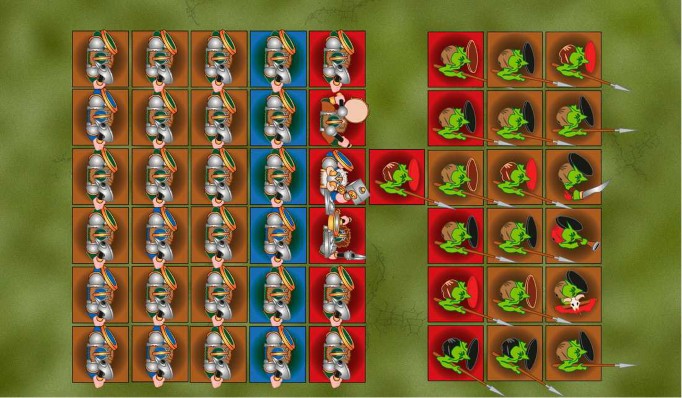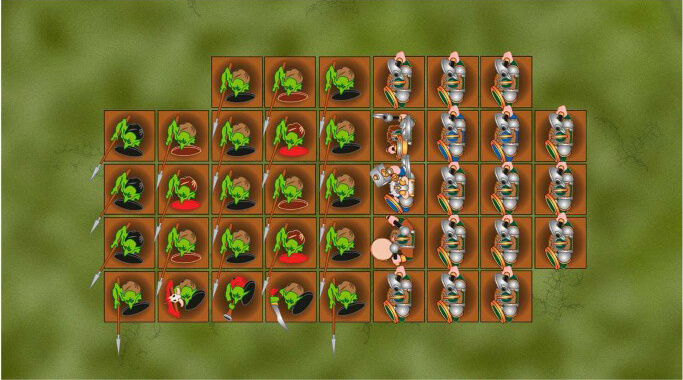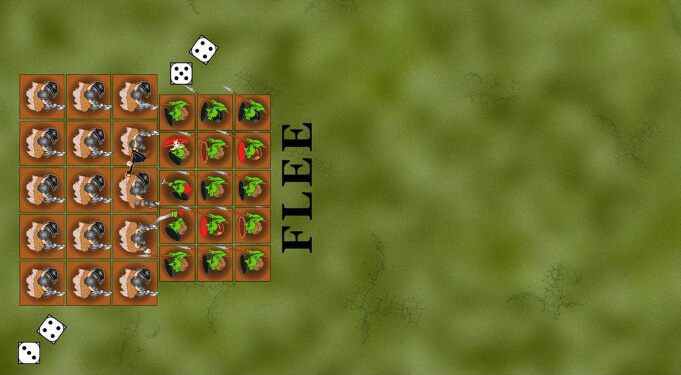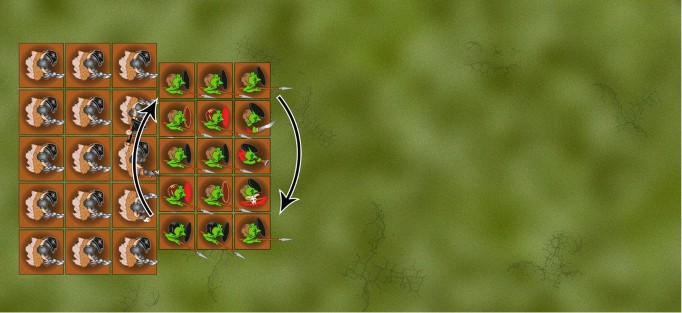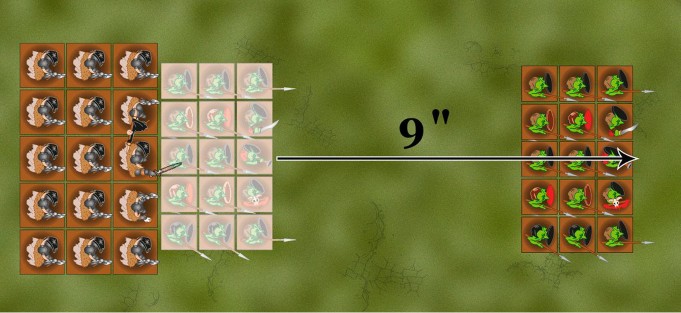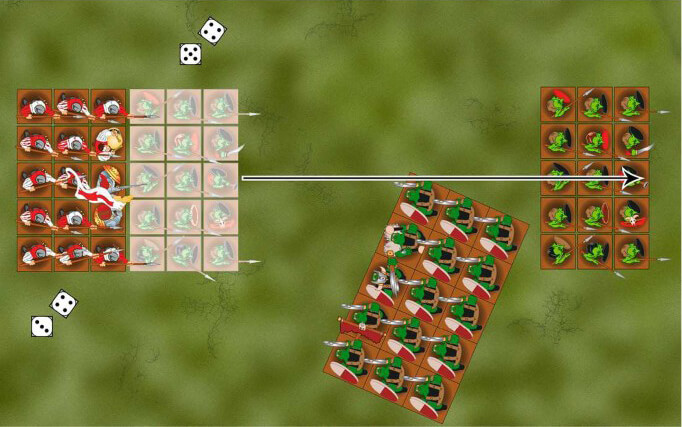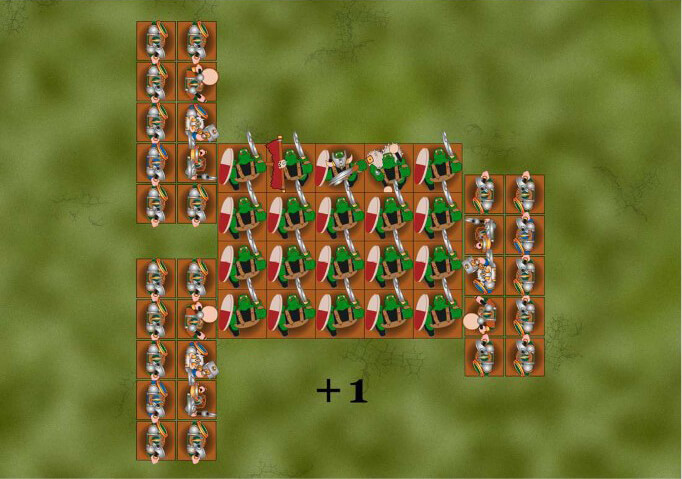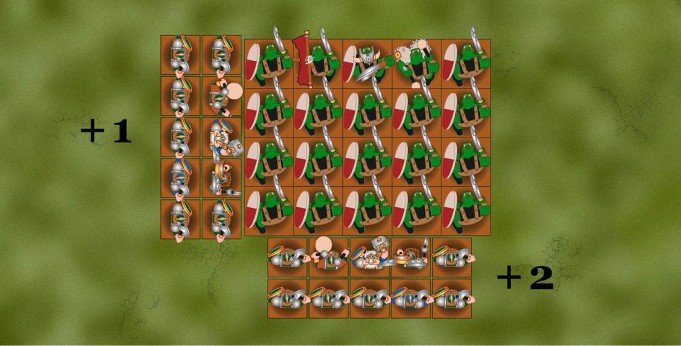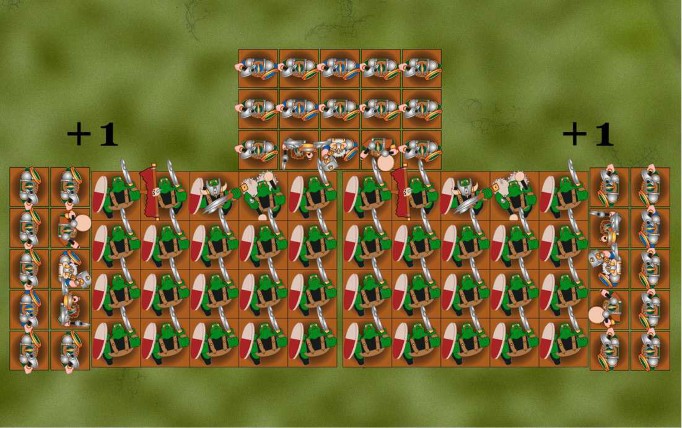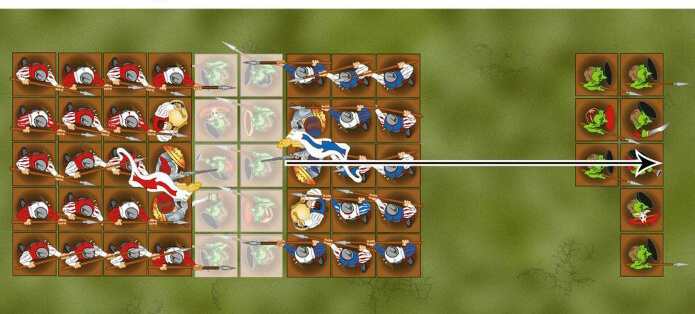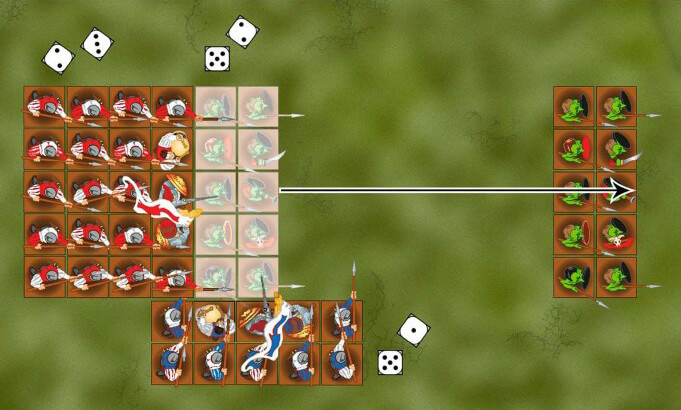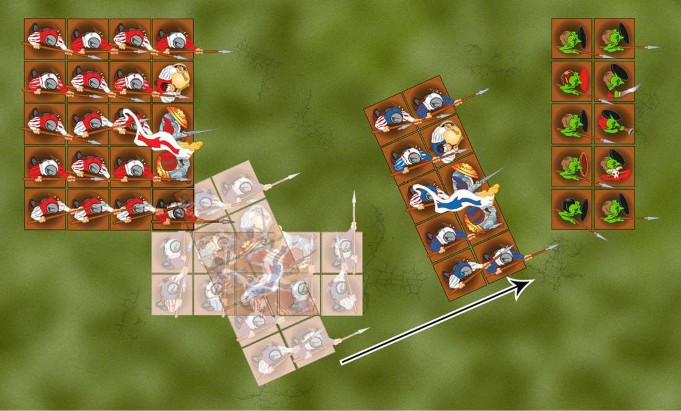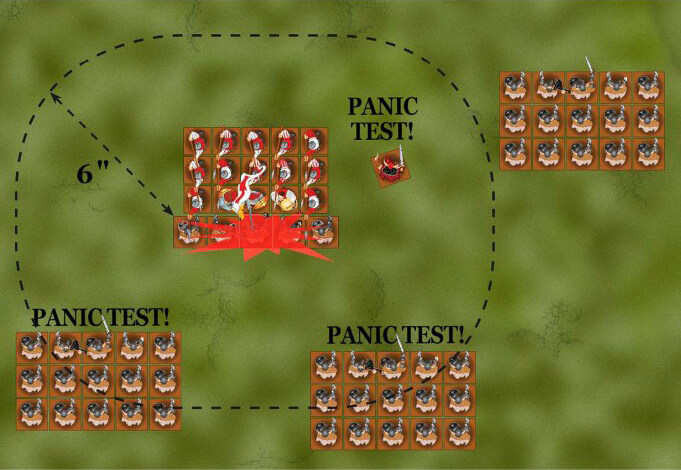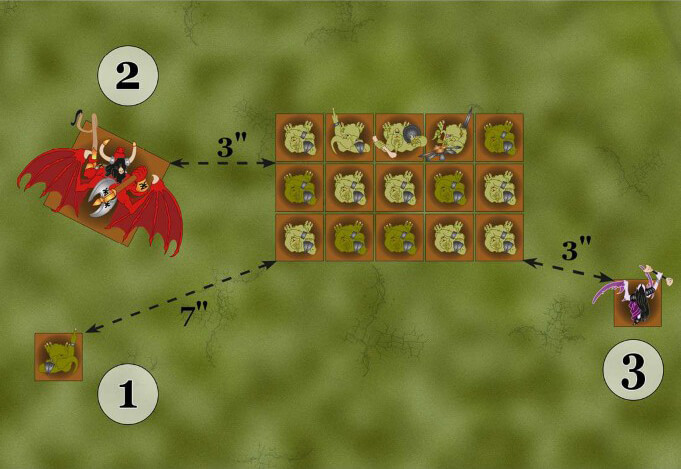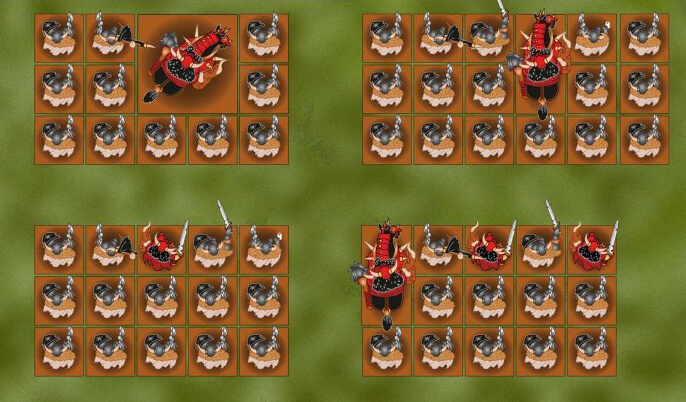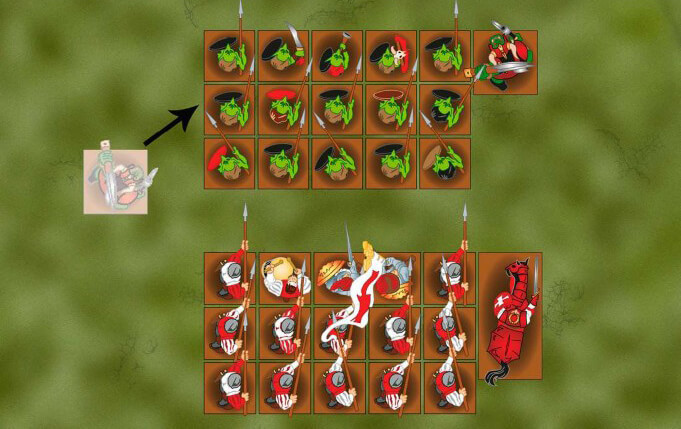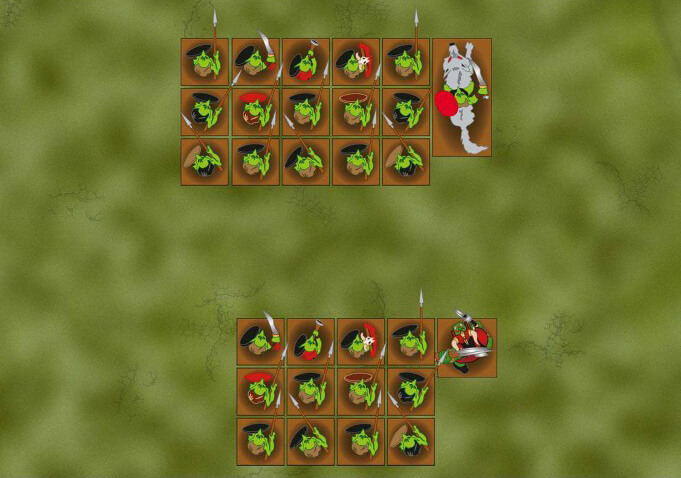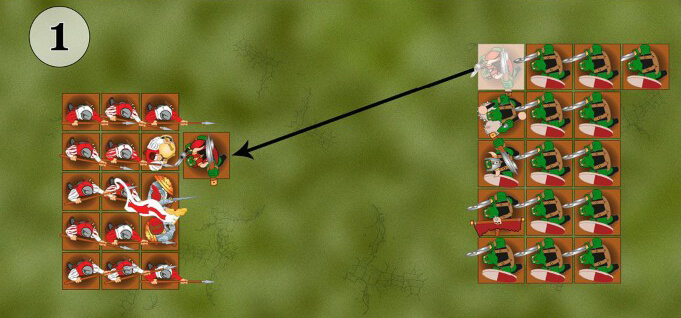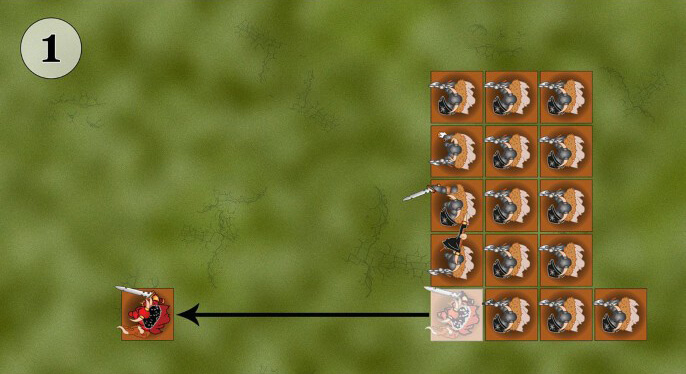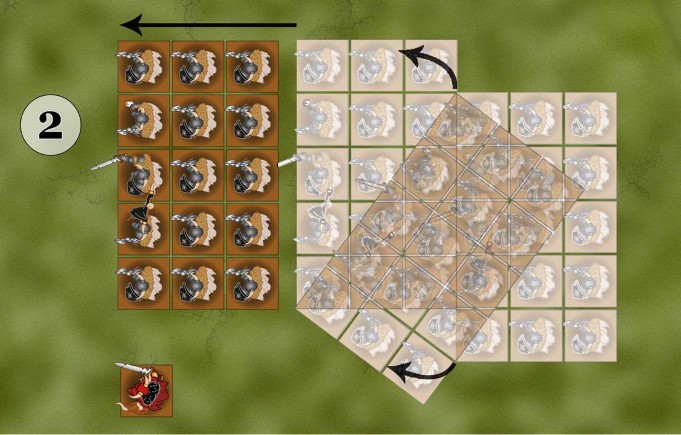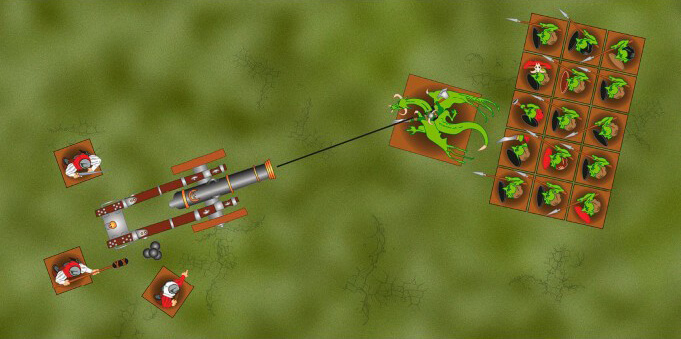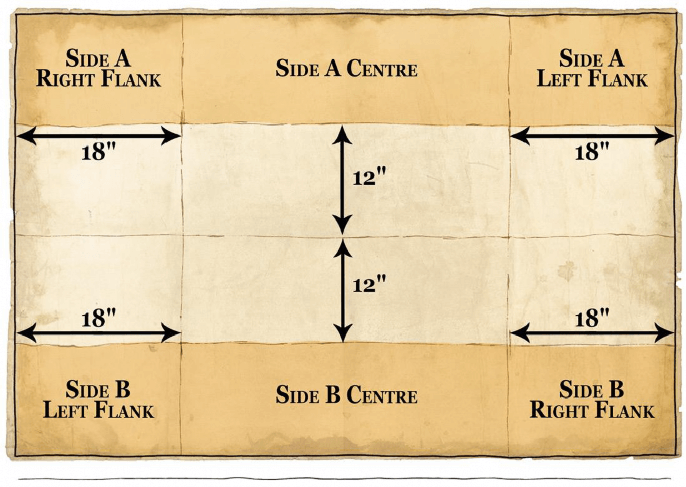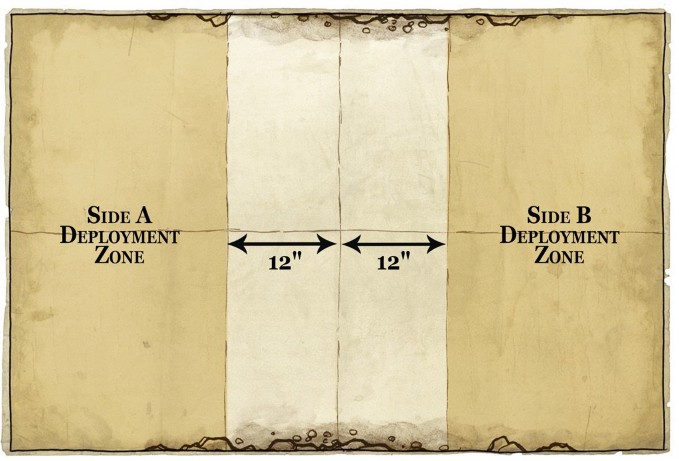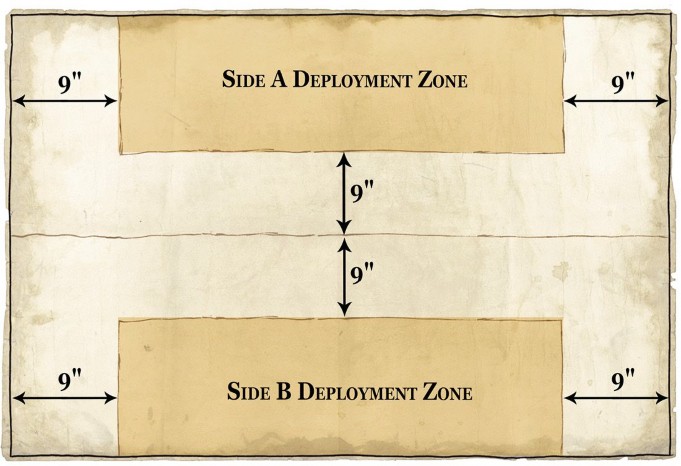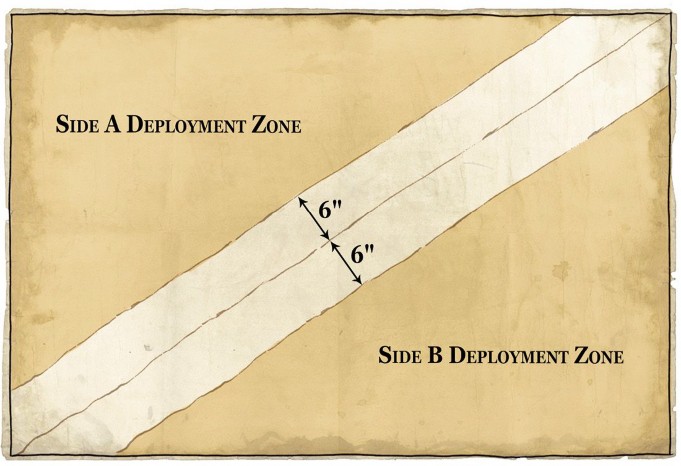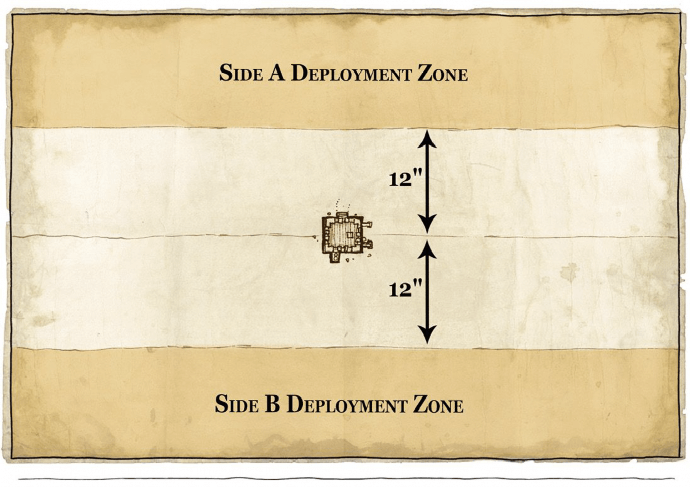The term cavalry refers to roughly man-sized riders mounted on war beasts – commonly warhorses, or similar creatures. Good examples of cavalry are things such as Bretonnian Questing Knights, Orc Boar Boyz or Dark Elf Cold One Knights. Cavalry specialise in performing devastating charges, using the momentum of mount and rider to smash the enemy formation apart whilst skewering the unlucky foes with lance, spear or sword.
Split Profile
Although a cavalry model has two sets of characteristics, one for the rider and one for the mount, it is treated in all respects as a single model – the rider cannot dismount. When moving, the cavalry model always uses the Movement characteristic of the mount, and never that of the rider.
The rider and mount use their own Weapon Skill, Strength, Initiative and Attacks characteristics when they attack. Each can attack any opponent that the cavalry model is in base contact with.
The mount's Wounds and Toughness are never used. We assume that the enemy always strikes at the rider, so his Wounds and Toughness are used instead – if the rider is slain, we treat the mount as having fled the battle or been slain alongside its master.
Similarly, it is the rider's Weapon Skill that is used for the purposes of the enemy rolling to hit – the mount's Weapon Skill is used only when the mount strikes blows. We assume the rider to be in complete control of his mount, so the mount's Leadership is never used, unless a special rule states otherwise.
If the rider has a missile weapon, he always uses his own Ballistic Skill, rather than that of his mount (as most mounts have a Ballistic Skill of 0 anyway, this should be fairly obvious).
Charging, Fleeing and Pursuing
Cavalry have the Swiftstride rule.
Cavalry and Supporting Attacks
When a cavalry model makes supporting attacks, only the rider can strike – we assume that the mount lacks both the discipline and the reach to fight through those ahead of it.
Cavalry and Special Rules
Unless otherwise noted, special rules that apply to the mount do not normally also apply to the rider, and vice versa. There are, however, a few exceptions:
If the rider or the mount causes Fear or Terror, then the entire combined model is assumed to cause Fear/Terror.
If either the rider or the mount is subject to Stupidity, then the whole model is affected by the result of the test.
If either the rider or the mount are Immune to Psychology or immune to Fear, Terror or Panic, then so is the whole model.
If either the rider or the mount have Frenzy, then the whole model is subject to the Berserk Rage, but only the element with the Frenzy rule gains an Extra Attack.
If the mount has the Fast Cavalry special rule, then the whole model has it.
Cavalry Armour Saves
If a cavalry model is called upon to take an armour save, it is the rider's armor save that is used. However, the rider does receive a modicum of additional protection from his mighty mount. A cavalry model's armor save is treated as being one point better than normal, so a model with heavy armor and shield, who would normally have a 4+ armor save if he were infantry, has a 3+ armor save for being cavalry. Furthermore, if the mount has barding (i.e. armor of its own), the rider's armor save is increased by two points, rather than one, which would give the model described above a massive 2+ armor save.
Barding and Movement
Troops riding mounts with barding are better protected, as explained above, but the mount is slowed by the extra weight of the barding. Accordingly, a cavalry model with barding has its Move characteristic reduced by 1". So, for example, a knight riding a horse can normally move 8", but if the horse is wearing barding, he will only move 7"
Cavalry and Terrain
Cavalry have to take Dangerous Terrain tests if they move swiftly over anything other than open ground or hills (see the Battlefield Terrain).
Cavalry and Buildings
As we'll discover later, buildings can often be occupied by units as the game goes on. However, as you might expect, cavalry cannot garrison buildings – most riding beasts are too large to fit through ordinary doors, and the riders won't abandon their mounts.
Nevertheless, we do allow cavalry models to assault buildings (as covered in the Battlefield Terrain chapter). We assume that the riders tether their mounts a short way from the fight before charging home on foot – accordingly, the mounts cannot fight, only the riders (and clearly the riders will not receive any armour save bonus from their mount during the fight!). Obviously, should the assault successfully drive the defender out of the building, the cavalry models cannot garrison the structure in their place.

